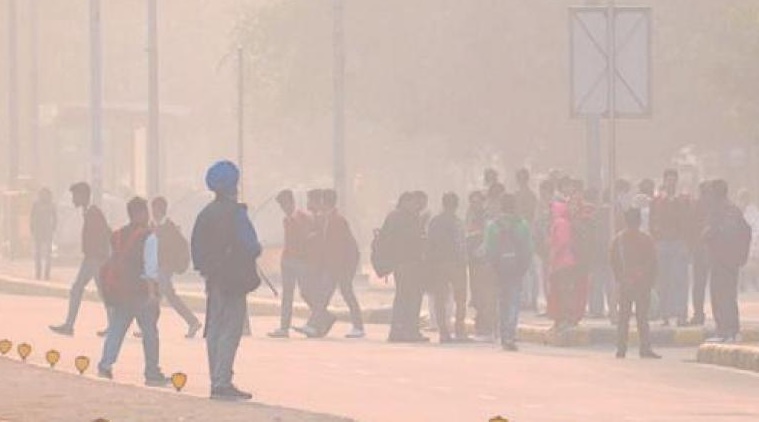 Punjab’s average AQI on March 21 — a day before Janta Curfew — was 107.50, while it reduced to 74.50 on March 22, the day Janta Curfew was observed. (Representational Photo)
Punjab’s average AQI on March 21 — a day before Janta Curfew — was 107.50, while it reduced to 74.50 on March 22, the day Janta Curfew was observed. (Representational Photo)
THE LOCKDOWN has hit businesses and led to a fall in revenue, but it has improved Punjab’s air quality by 57.7 per cent compared to the same period last year.
According to Punjab Pollution Control board, Punjab’s average AQI from March 22 to April 23 (34 days) was 47.82, which is considered “good” and puts state in the “green zone”. The Central Pollution Control Board (CPCB) says that AQI between 0-50 is termed as “good and has minimal health impact on humans”.
During the corresponding period last year (March 22-April 23, 2019), the state’s average AQI was 113.11, which is termed as “moderate” and is in the “yellow zone”. As per CPCB’s AQI parameters, “moderate zone” AQI between 100-200 can cause breathing discomfort to the people with lungs, asthma and heart diseases. For the corresponding period, the change Punjab’s AQI for better stands at 57.7 per cent. Punjab has been under curfew since March 23. The nationwide lockdown was announced from March 24 midnight.
Interestingly, Delhi’s average AQI during March 22-April 23 this year remained as 105.27 compared to 197.06 of same time period of 2019 – an improvement of 46.59 per cent compared to last year.
In Punjab, AQI levels were recorded by PPCB at 6 points — Mandi Gobindgarh, known as the steel town, state’s biggest industrial hub Ludhiana, Khanna, which is famous for industrial as well as agricultural procurement activities and has Asia’s largest grain market, Amritsar and Jalandhar, both big industrial hubs, and Patiala, which is the state headquarter of PPCB.
One of the most polluted cities of India, Ludhiana, remained the cleanest city in the country with lowest AQI levels on many lockdown days. The AQI level of Ludhiana was 36 on March 23, while on March 25 it was 27.
AQI of all the cities of Punjab remained below 100 throughout the lockdown period. The minimum AQI of Punjab during the 34 days of curfew was on March 28 which was 30.66, while the maximum was on April 15 at 77.
Punjab’s average AQI on March 21 — a day before Janta Curfew — was 107.50, while it reduced to 74.50 on March 22, the day Janta Curfew was observed. It further fell to 51.33 on March 23 and then to 34.83 on March 25.
However, in 2019 during the same period, the minimum AQI was 81.83 (March 22) and the maximum was 159 (April 5).
Punjab performed far better than Delhi as according to the AQI figures from PPCB, Delhi’s minimum AQI was 69 (April 2) and maximum AQI was on March 22 at 191.7.
Meanwhile, with relaxations slowly coming into force, Punjab’s AQI has started rising above the green level (0-50). On April 23, Amritsar’s AQI was 57, while Ludhiana was at 58. Mandi Gobindgarh on the same day (April 23) had an AQI of 75, while Patiala’s AQI was 56. Jalandhar on April 23 was at 42, while Khanna at 54. Punjab’s average AQI was therefore 57 for that day, which is still better that AQI of 122 the state recorded on April 23, 2019.
Box Lockdown Gains
Average AQI of Punjab
March 22- April 23, 2020 47.82
March 22- April 23, 2019 113.11
Improvement (in percentage) 57.7%
Average AQI of Delhi
March 22- April 23, 2020 105.27
March 22- April 23, 2019 197.06
Improvement (in percentage) 46.5%